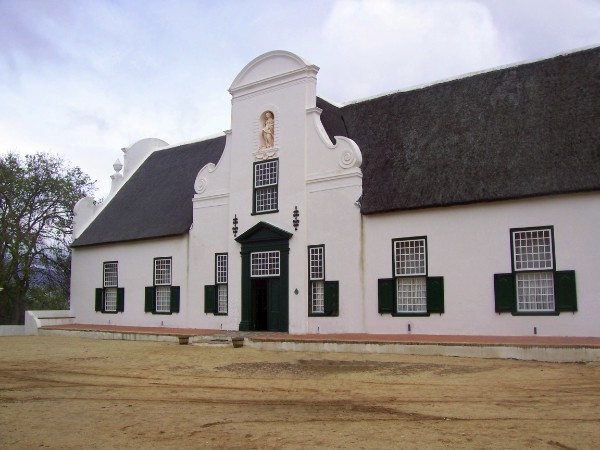|
Castle Of Good Hope
The Castle of Good Hope ( nl, Kasteel de Goede Hoop; af, Kasteel die Goeie Hoop) known locally as the Castle or Cape Town Castle is a bastion fort built in the 17th century in Cape Town, South Africa. Originally located on the coastline of Table Bay, following land reclamation the fort is now located inland.Dirk Teeuwen (2007) ''Kasteel De Goede Hoop, Castle of Good Hope'' In 1936 the Castle was declared a historical monument (now a provincial heritage site) and following restorations in the 1980s it is considered the best preserved example of a Dutch East India Company fort. [...More Info...] [...Related Items...] OR: [Wikipedia] [Google] [Baidu] |
Bastion Fort
A bastion fort or ''trace italienne'' (a phrase derived from non-standard French, literally meaning ''Italian outline'') is a fortification in a style that evolved during the early modern period of gunpowder when the cannon came to dominate the battlefield. It was first seen in the mid-fifteenth century in Italy. Some types, especially when combined with ravelins and other outworks, resembled the related star fort of the same era. The design of the fort is normally a polygon with bastions at the corners of the walls. These outcroppings eliminated protected blind spots, called "dead zones", and allowed fire along the curtain from positions protected from direct fire. Many bastion forts also feature cavaliers, which are raised secondary structures based entirely inside the primary structure. Origins Their predecessors, medieval fortresses, were usually placed on high hills. From there, arrows were shot at the enemies. The enemies' hope was to either ram the gate or c ... [...More Info...] [...Related Items...] OR: [Wikipedia] [Google] [Baidu] |
Early Modern Britain
Early modern Britain is the history of the island of Great Britain roughly corresponding to the 16th, 17th and 18th centuries. Major historical events in early modern British history include numerous wars, especially with France, along with the English Renaissance, the English Reformation and Scottish Reformation, the English Civil War, the Restoration of Charles II, the Glorious Revolution, the Treaty of Union, the Scottish Enlightenment and the formation and the collapse of the First British Empire. England during the Tudor period (1486–1603) English Renaissance The term, "English Renaissance" is used by many historians to refer to a cultural movement in England in the 16th and 17th centuries that was heavily influenced by the Italian Renaissance. This movement is characterised by the flowering of English music (particularly the English adoption and development of the madrigal), notable achievements in drama (by William Shakespeare, Christopher Marlowe, and Ben Jon ... [...More Info...] [...Related Items...] OR: [Wikipedia] [Google] [Baidu] |
Louis Michel Thibault
Louis Michel Thibault (28 September 1750 – 15 November 1815), was a French-born South African architect and engineer who designed numerous buildings in the Cape Colony. He was South Africa's first trained architect and brought with him a distinctive mannered neo-classicism. Life and career Born 28 September 1750 in Picquigny, Picardy in France, Thibault was trained at the Royal Academy of Architecture in Paris. At the time, the academy under Ange-Jacques Gabriel, provided the best architectural training available. Gabriel was an architect in the classical tradition, and had an important formative influence on Thibault's style. After qualifying at the academy, details of the next few years of Thibault's life are unknown. It is known, however, that he studied military engineering in Paris under the sponsorship of Colonel Charles Daniel de Meuron. Cape under Dutch occupation to 1795 The Swiss mercenary DeMeuron Regiment in the service of the Dutch East India Company, arr ... [...More Info...] [...Related Items...] OR: [Wikipedia] [Google] [Baidu] |
East-Frisia
East Frisia or East Friesland (german: Ostfriesland; ; stq, Aastfräislound) is a historic region in the northwest of Lower Saxony, Germany. It is primarily located on the western half of the East Frisian peninsula, to the east of West Frisia and to the west of Landkreis Friesland. Administratively, East Frisia consists of the districts Aurich, Leer and Wittmund and the city of Emden. It has a population of approximately 469,000 people and an area of . There is a chain of islands off the coast, called the East Frisian Islands (''Ostfriesische Inseln''). From west to east, these islands are: Borkum, Juist, Norderney, Baltrum, Langeoog and Spiekeroog. History The geographical region of East Frisia was inhabited in Paleolithic times by reindeer hunters of the Hamburg culture. Later there were Mesolithic and Neolithic settlements of various cultures. The period after prehistory can only be reconstructed from archaeological evidence. Access to the early history of East Fr ... [...More Info...] [...Related Items...] OR: [Wikipedia] [Google] [Baidu] |
Amsterdam
Amsterdam ( , , , lit. ''The Dam on the River Amstel'') is the Capital of the Netherlands, capital and Municipalities of the Netherlands, most populous city of the Netherlands, with The Hague being the seat of government. It has a population of 907,976 within the city proper, 1,558,755 in the City Region of Amsterdam, urban area and 2,480,394 in the Amsterdam metropolitan area, metropolitan area. Located in the Provinces of the Netherlands, Dutch province of North Holland, Amsterdam is colloquially referred to as the "Venice of the North", for its large number of canals, now designated a World Heritage Site, UNESCO World Heritage Site. Amsterdam was founded at the mouth of the Amstel River that was dammed to control flooding; the city's name derives from the Amstel dam. Originally a small fishing village in the late 12th century, Amsterdam became a major world port during the Dutch Golden Age of the 17th century, when the Netherlands was an economic powerhouse. Amsterdam is th ... [...More Info...] [...Related Items...] OR: [Wikipedia] [Google] [Baidu] |
Kasteel De Goede Hoop Circa 1680
Kasteel is the Dutch language word for a castle or château. It can also refer to: * Sparta Stadion Het Kasteel, a football stadium * Joop Kasteel Joop Kasteel, also known as "de zwarte parel" ("the black pearl", born 27 August 1964), is a Dutch former mixed martial artist. He made his mixed martial arts debut on 15 June 1996. He is a veteran of the RINGS promotion and as he has fought t ... (born 1964), a Dutch mixed martial artist * Piet Kasteel (1901–2003), a Dutch journalist, diplomat, and colonial administrator {{disambig ... [...More Info...] [...Related Items...] OR: [Wikipedia] [Google] [Baidu] |
Stellenberg, Bellville
Stellenberg is a suburb in Bellville, Western Cape South Africa. Name and history The suburb originates its name from the original farm on which it was developed. The farm were called Stellenburgh (later changed to Stellenburg), and was originally owned by Johannes (Joan) Blesius in 1705. Blesius named it after the Stellenbosch Mountain which one could see from the farm. Stellenbosch is named after the Governor of the Cape Colony, Simon van der Stel. Blesius was awarded the farm by Willem Adriaan van der Stel. This van der Stel was the son of Governor Simon van der Stel. Blesius (b.1656, d.1711) came from Breukelen, the Netherlands. The land felt under the jurisdiction of de Kuijlen. In 1707 Jacobus van der Heijden became owner of the land. The land stayed in the van der Heijde family until JF de Kock bought it. JF de Kock owned it up to 1736, when it was rewarded to Hilletjie Olivier. She died in 1765. On 3 January 1882 it was transferred to John Starke and then to Jacob Jacob ... [...More Info...] [...Related Items...] OR: [Wikipedia] [Google] [Baidu] |
House Of Orange-Nassau
The House of Orange-Nassau (Dutch: ''Huis van Oranje-Nassau'', ) is the current reigning house of the Netherlands. A branch of the European House of Nassau, the house has played a central role in the politics and government of the Netherlands and Europe especially since William the Silent organised the Dutch Revolt against Spanish rule, which after the Eighty Years' War (1568–1648) led to an independent Dutch state. Several members of the house served during this war and after as stadtholder ("governor"; Dutch: ''stadhouder'') during the Dutch Republic. However, in 1815, after a long period as a republic, the Netherlands became a monarchy under the House of Orange-Nassau. The dynasty was established as a result of the marriage of Henry III of Nassau-Breda from Germany and Claudia of Châlon-Orange from French Burgundy in 1515. Their son René of Chalon inherited in 1530 the independent and sovereign Principality of Orange from his mother's brother, Philibert of Châlon. ... [...More Info...] [...Related Items...] OR: [Wikipedia] [Google] [Baidu] |
County Of Katzenelnbogen
The County of Katzenelnbogen was an immediate state of the Holy Roman Empire. Chatti Melibokus is a very old tribe who stayed on a high hill in the Bergstraße region of Hesse (the part that lies south), in Germany. It existed between 1095 and 1479, when it was inherited by the Landgraves of Hesse. The estate comprised two separate territories. The main parts were the original ''Untergrafschaft'' ("lower county") with its capital at Katzenelnbogen in the Middle Rhine area and the ''Obergrafschaft'' ("upper county") south of the Main River around Darmstadt, predecessor of the Landgraviate of Hesse-Darmstadt. History One Diether I (''circa'' 1065–95) of ''Katzenelnbogen'' (literally ''cat's elbow''), then serving as ''Vogt'' of Prüm Abbey, was first mentioned about 1070 in a deed issued by Archbishop Anno II of Cologne. From 1094 onwards, Diether and his son Henry I built Katzenelnbogen Castle in the Taunus mountain range; in 1138, King Conrad III of Germany vested hi ... [...More Info...] [...Related Items...] OR: [Wikipedia] [Google] [Baidu] |
Buren
Buren () is a town and municipality in the Betuwe region of the Netherlands. Buren has 27,168 inhabitants as of 1 January 2022. Geography Buren is located in Gelderland, a province of the Netherlands. It is part of the landscape of Betuwe, a very fertile strip of land between two branches of Rhine-Meuse Delta, the Nederrijn in the north and the Waal in the south. Population Centers Population centers include: History The earliest known settlement of the region occurred as early as 772. The castle was built by the Lords of Buren and was first mentioned in 1298. The town was granted city rights in 1395 by Sir Alard IV of Buren which led to the construction of a defensive wall and a moat, significant portions of which still stand. In 1492, the region was promoted to a county (i.e. a territory ruled by a count) but had limited economic influence due to its geographic isolation. By 1574, the previously Catholic parish church of Saint-Lambert ( nl, Sint Lambertus) became Calvin ... [...More Info...] [...Related Items...] OR: [Wikipedia] [Google] [Baidu] |
Leerdam
Leerdam () is a city and former municipality in the western Netherlands, in the province of Utrecht. The municipality was merged with the municipalities of Vianen and Zederik on 1 January 2019. The name of the new municipality is Vijfheerenlanden which is a part of the province Utrecht. The former municipality Leerdam was a part of the province South Holland. The south border of the town is formed by the river Linge. The name originates from a dam in the river Lede which was a branch from the river Linge towards Meerkerk. Leerdam is situated almost exactly in the middle of the three highways A2, A15 and A27. History Leerdam received city rights in 1407. The small river Linge, bordered by beautiful water meadows, defines the atmosphere and tone of the landscape. Several centuries ago Leerdam formed a part of the Vijfheerenlanden domain, before it was raised to the level of County in 1498. In 1551, Leerdam, together with Acquoy, became property of the House of Orange and part ... [...More Info...] [...Related Items...] OR: [Wikipedia] [Google] [Baidu] |




.jpg)

